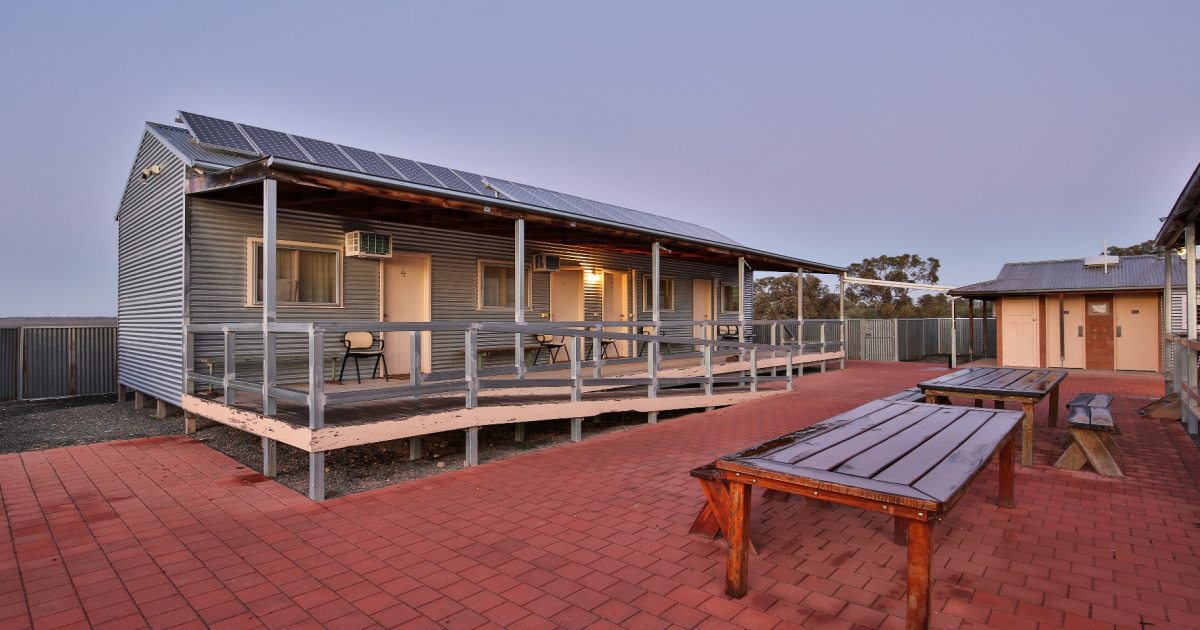Solar power is set to help New South Wales National Parks and Wildlife Service achieve its carbon emission reduction goals.
Managing over 9% of the state, NPWS is the custodian of more than 40% of all forest carbon in New South Wales – approximately 900 million tonnes.
“Our national parks represent one of the largest carbon stores in New South Wales,” NPWS states. “Providing secure, long-term protection for these carbon stocks is a vital contribution to managing climate change risk.”
What’s not helpful is when a bunch of it goes up in smoke.
While it is yet to figure out how to quantify and account for fire management emissions, including hazard reduction burns and bushfires, the Department has determined the emissions it is responsible for in going about other aspects of its important work. Based on that work, the organisation has set a couple of targets, being:
- 2025: reduce carbon emissions by 55% (Scope 1 and 2).
- 2028: reach net zero, and become carbon positive (sequestration rates will exceed emissions).
Estimated Scope 1 (direct emissions from sources it owns or controls) and Scope 2 ( emissions associated with generation of energy purchased) for NPWS are 14,543 tonnes of carbon dioxide equivalent (t CO2-e) annually using a 2018–19 baseline. The sources primarily contributing to these emissions are the burning of gas, transport fuel and the electricity it purchases. Electricity is the biggest contributor, at 55%.
Solar Power And EV Charger Installations
The electricity NSW NPWS purchases is low-hanging fruit. By buying 100% renewable energy, NPWS will reduce emissions by 55% by 2025 to 6583 t CO2e in one fell swoop.
The renewables part of the plan also involves installing solar panels at sites consuming more than 10 MWh a year, in order to reduce the amount of green mains grid electricity purchased.
The Department estimates an average system size of 11kW and a total solar spend of $2 million. But it has estimated capital expenditure assuming a system cost of “$1.50/Watt plus installation including remote locations”.
That’s very pricey given installation costs are on top of the $1.50/Watt. The SolarQuotes Australian Solar Price Index New South Wales page indicates in October, fully installed 10kW solar systems were costing around $1.02/Watt on average – and that was in the midst of current supply issues.
NPWS may be able to get more solar energy bang for its buck or the total amount of capital expenditure will be significantly less than what it anticipates. It’s also possible the estimate wording was incorrect and was meant to read “including installation”. With remote areas involved, that would make more sense.
NPWS isn’t a total stranger to the power of PV. Back in 2011, a 13-kilowatt rooftop solar system was installed atop the Jindabyne National Parks Offices & Visitor Centre. A quick squiz at Google Earth shows a system still in place on the Centre, assumed to be the original. Another example is pictured above – solar panels on the roof of the historic shearer’s quarters accommodation in Mungo National Park, which was formerly a sheep station.
Among its other actions, NPWS will also trial electric vehicle charging stations in key park areas that will be no doubt welcomed by EV owners.
From Net Zero To Carbon Positive
Dealing with the rest of its emissions (including Scope 3) and then moving into carbon positive territory involves other initiatives, including pilot projects to demonstrate how national park management can sequester carbon in an environmentally responsible manner.
“These pilot projects are the first of their kind for NPWS and signal a new opportunity for NPWS to generate and trade carbon credits,” says the Department.
Further information on NPWS’s net zero to carbon positive action plan can be found here.


 RSS - Posts
RSS - Posts



“2028: reach net zero and become carbon positive.”
Methinks you have the terminology incorrect. Reaching “net zero” GHG emissions means becoming carbon neutral.
In terms of CO2 equivalents, the atmosphere in 2020 contained 504 ppm, of which 412 is CO2 alone. The rest comes from other gases.
https://gml.noaa.gov/aggi/
Atmospheric carbon is already too high for a safe climate for humanity. We need effective atmospheric carbon drawdown measures, or negative emissions.
It is kind of confusing, but that is how the NSW National Parks and Wildlife Service use the term. From their point of view the amount of carbon they will be storing will be increasing and so it will be carbon positive, the opposite of how it’s usually meant for the atmosphere.